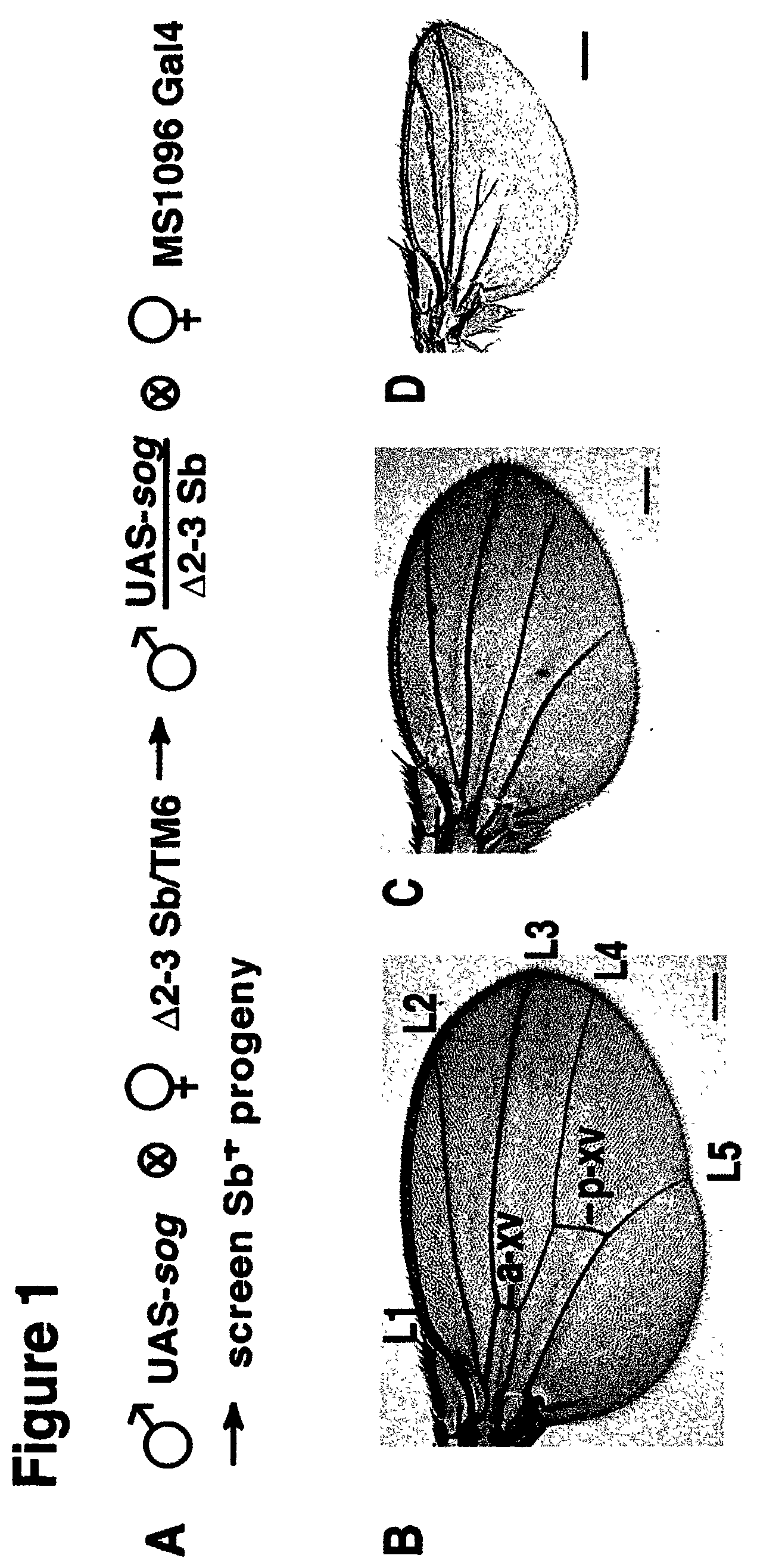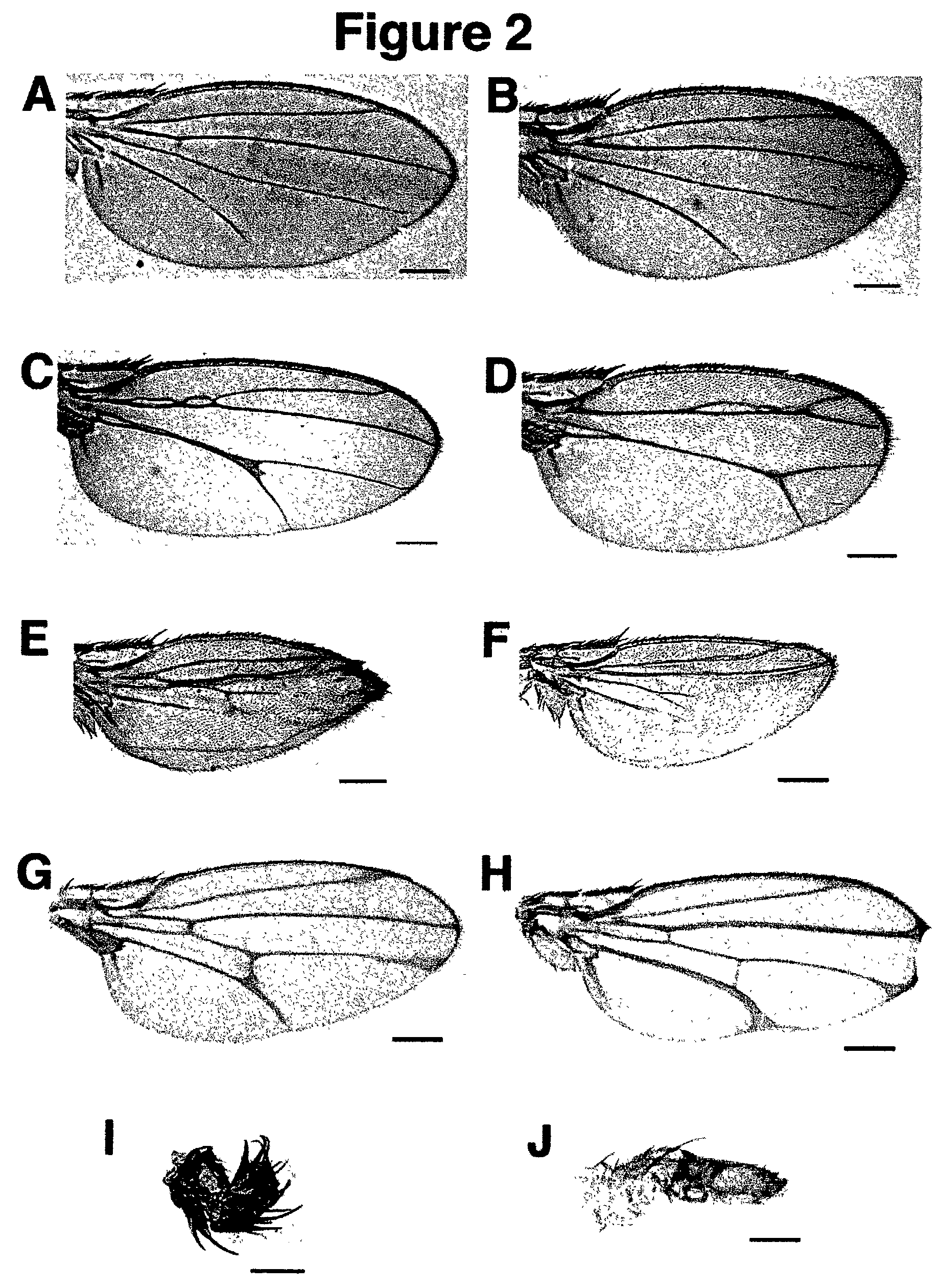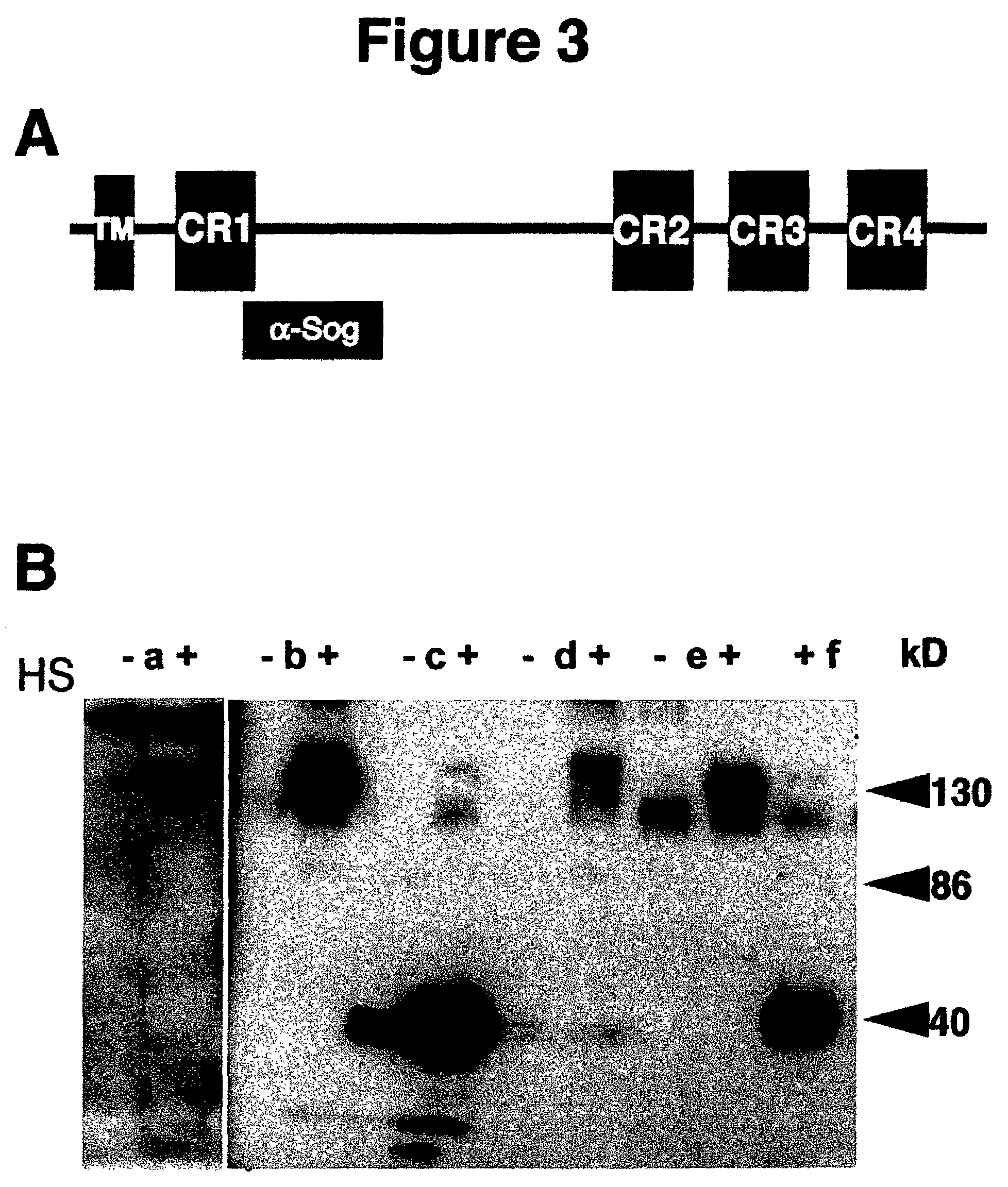Method for generating overexpression of alleles in genes of unknown function
a technology of alleles and genes, applied in the field of transgenic flies, can solve the problems of hampered pharmaceutical research, inability to understand the mechanism of action, and inability to generate alleles in genes of unknown function,
- Summary
- Abstract
- Description
- Claims
- Application Information
AI Technical Summary
Benefits of technology
Problems solved by technology
Method used
Image
Examples
example 1
[0073]Mutagen=ethyl methane Sulfonate (EMS)
[0074]Transgene=HS-gene-x or pUAS-gene-x
[0075]i. white− males carrying a white+marked transgene-x on an autosomal chromosome denoted
[0076]w−; p[w+gene-x] / p[w+gene-x] are crossed en masse to white− females (for HS-gene-x constructs) or white−; GAL4 / GAL4 females (for UAS-gene-x constructs) at a ratio 25 mutagenized males to 50 females in bottles of fly food.
[0077]ii. Single progeny of this cross carrying a mutagenized transgene and the linked balancer chromosome denoted w−; p[w+gene-x*]; ±GAL4 are then screened for a NOVA phenotype.
[0078]iii. Candidate NOVA mutants are then crossed to the appropriate balancer females to establish stable stocks, which are then retested for dependence on heat induction of GAL4 and analyzed further.
[0079]See FIG. 4 for an example of EMS induced mutations generated in a UAS-EGFR transgene to generate a dominant negative form of the EGF-Receptor. This method was also used (FIG. 5A) to generate loss-of-function rho...
example 2
[0084]Mutagen=p-element Transposase enzyme
[0085]Transgene=pUAS-gene-x
[0086]i. w−; p[w+UAS-gene-x] / p[w+UAS-gene-x] flies are crossed to flies carrying an activated form of transposase denoted w−; Δ2–3 Sb / TM6.
[0087]ii. Males of the genotype: w−; p[w+UAS-gene-x]; Δ2–3 Sb (transgene-x on the X-chromosome, second chromosome, or fourth chromosome) or w−; p[w+UAS-gene-x] / Δ2–3 Sb (transgene-x on the third chromosome) are crossed to w−; GAL4 / GAL4 females (the GAL4 driver of choice can be located on any chromosome) at a ratio of 3 mutagenized males to 8 females in vials of fly food (vials are used instead of bottles to insure that independent Δ2–3 induced mutations are recovered separately).
[0088]iii. Candidate NOVA mutants of the genotype w−; p[w+UAS-gene-x]; GAL4 or
[0089]w−; p[w+UAS-gene-x] / GAL4 are then crossed to the appropriate balancer females to establish stable stocks, which are then retested for GAL4 dependence and analyzed further.
[0090]Examples are shown of dominant NOVA and domina...
example 3
[0099]Isolation of Rho Overexpression Alleles.
[0100]Rho has been recently defined as a novel type of intramembrane serine protease that cleaves the membrane-bound ligand Spi (mSpi) in the Golgi apparatus before its release into the extracellular space. Although a catalytic domain and key residues essential for proteolytic activity have been defined in Rho (Urban et al (2001)), it is not known which other parts of the protein fulfill regulatory functions and interact with functional partners such as Star or other components. Like many proteins recently identified in the Drosophila genome project, Rho does not contain any signature domains that could give clues about possible protein-protein interactions. In this context, Inventors developed a new strategy to screen for potential NOVA alleles of rho, which might provide additional insights into the mode of Rho action. The NOVA method makes use of the two-component GAL4 / UAS expression system (Brand, A. H. & Perrimon, N. (1993)). The pr...
PUM
| Property | Measurement | Unit |
|---|---|---|
| structure | aaaaa | aaaaa |
| molecular defect | aaaaa | aaaaa |
| concentration | aaaaa | aaaaa |
Abstract
Description
Claims
Application Information
 Login to View More
Login to View More - R&D
- Intellectual Property
- Life Sciences
- Materials
- Tech Scout
- Unparalleled Data Quality
- Higher Quality Content
- 60% Fewer Hallucinations
Browse by: Latest US Patents, China's latest patents, Technical Efficacy Thesaurus, Application Domain, Technology Topic, Popular Technical Reports.
© 2025 PatSnap. All rights reserved.Legal|Privacy policy|Modern Slavery Act Transparency Statement|Sitemap|About US| Contact US: help@patsnap.com



